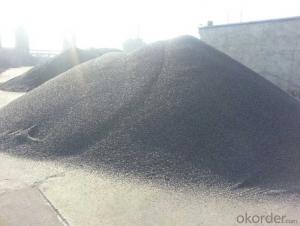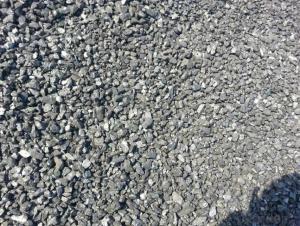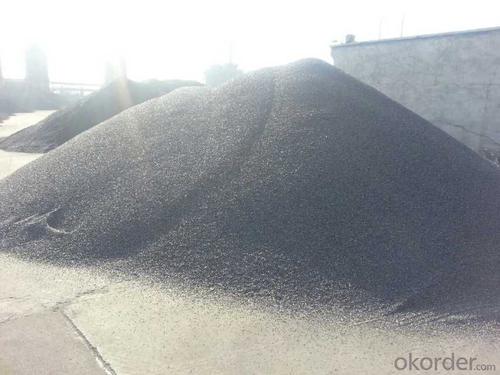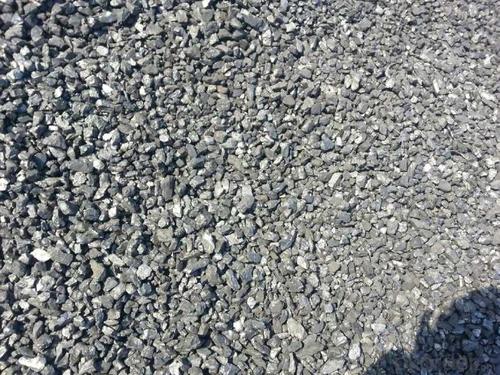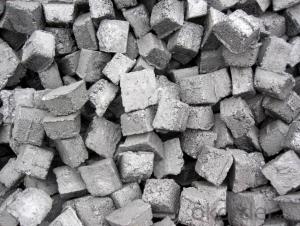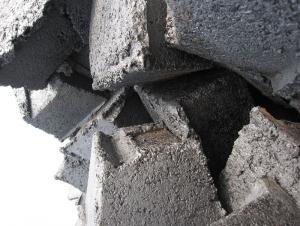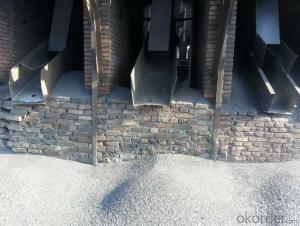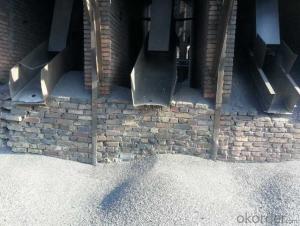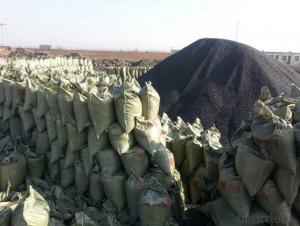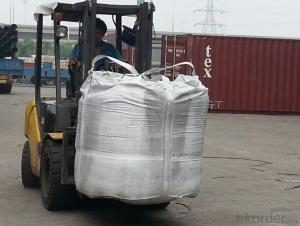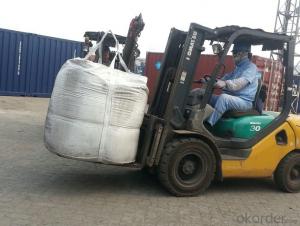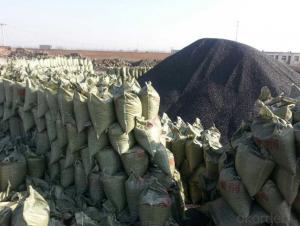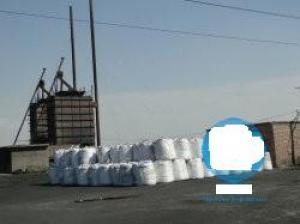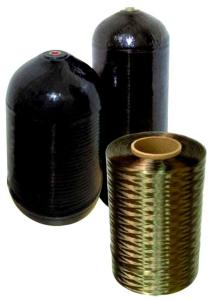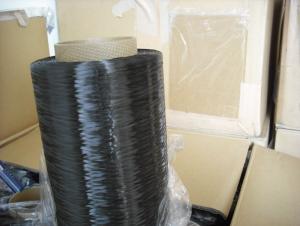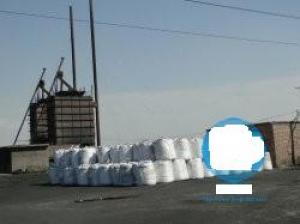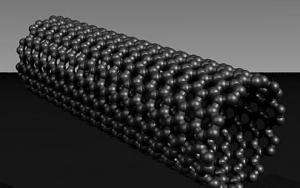Charge Coke FC90-95 with stable quality
- Loading Port:
- Tianjin
- Payment Terms:
- TT OR LC
- Min Order Qty:
- 20 m.t.
- Supply Capability:
- 3000 m.t./month
OKorder Service Pledge
OKorder Financial Service
You Might Also Like
Packaging & Delivery
25kgs/50kgs/1ton per bag or as buyer's request
Specifications
Calcined Anthracite
Fixed carbon: 90%-95%
S: 0.5% max
Size: 0-3. 3-5.3-15 or as request
It used the high quality anthracite as raw materials through high temperature calcined at over 2000 by the DC electric calciner with results in eliminating the moisture and volatile matter from anthracite efficiently, improving the density and the electric conductivity and strengthening the mechanical strength and anti-oxidation. It has good characteristics with low ash, low resistvity, low sulphur, high carbon and high density. It is the best material for high quality carbon products.
Advantage and competitive of caclined anthracite:
1. strong supply capability
2. fast transportation
3. lower and reasonable price for your reference
4.low sulphur, low ash
5.fixed carbon:95% -90%
6..sulphur:lower than 0.3%
General Specification of Calcined Anthracite:
| FC | 95 | 94 | 93 | 92 | 90 |
| ASH | 4 | 5 | 6 | 6.5 | 8.5 |
| V.M. | 1 | 1 | 1 | 1.5 | 1.5 |
| S | 0.3 | 0.3 | 0.3 | 0.35 | 0.35 |
| MOISTURE | 0.5 | 0.5 | 0.5 | 0.5 | 0.5 |
Pictures
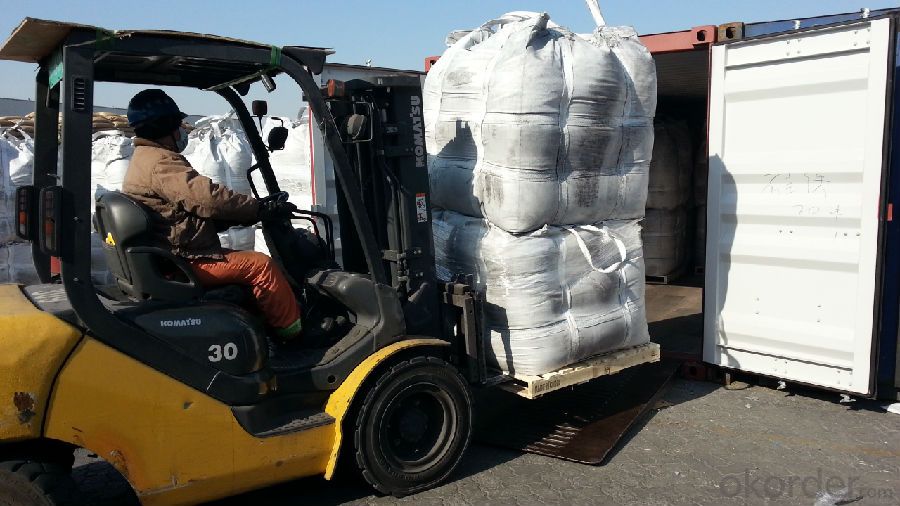
We are also strong at below materials, please contact us if you are interested in any of them:
Calcined Petroleum Coke
Carbon Electrode Paste
Carbon Electrode
- Q: What can light hydrocarbon carbon five be packed with?
- Gas used as a common gas:The light hydrocarbon gas generation device (light hydrocarbon gas generating unit) consists of six basic systems and three safety systems. Includes six basic systems: the host system, fuel supply system, heat system, control system, air system, closed unloading material system. The three major safety systems include ventilation system, lightning protection system, and electrostatic heating system for light hydrocarbon gas.In operation, the working pressure in the gasifier and the static pressure and dynamic pressure of the transmission pipe network are in theBetween 0.01 and 0.02MPa, the normal operating temperature of the gasifier is no more than 45 degrees centigrade, which is lower than that stipulated by the national pressure vessel.
- Q: Want advanced reinforcement, but I do not know where the high furnace rock carbon, looking for someone to guide...
- Landlord Hello, there are 51 bags sold in the mall, send the hope to adopt, thank you!
- Q: How does carbon impact the prevalence of wildfires?
- Carbon impacts the prevalence of wildfires in several ways. First, carbon dioxide (CO2) is a greenhouse gas that contributes to climate change. As concentrations of CO2 increase in the atmosphere, temperatures rise, leading to drier conditions in many regions. These dry conditions create a more favorable environment for wildfires to ignite and spread. Furthermore, carbon plays a significant role in the fuel load that can feed wildfires. Carbon-based materials, such as dead vegetation, trees, and other organic matter, serve as the primary fuel source for fires. As carbon accumulates in ecosystems, either through natural processes or human activities like deforestation, the amount of potential fuel for wildfires increases. This elevated fuel load can result in more frequent and intense fires. Additionally, carbon impacts the health and vitality of forests. Elevated levels of atmospheric CO2 can enhance plant growth, leading to denser vegetation. While this may seem beneficial, it can actually contribute to the intensity and severity of wildfires. Denser vegetation creates a greater amount of fuel, and when combined with the dry conditions caused by climate change, it becomes a recipe for more destructive fires. Lastly, the combustion of carbon-based materials during wildfires releases large amounts of carbon dioxide into the atmosphere. This creates a positive feedback loop, as the increased carbon emissions contribute to further climate change, which in turn exacerbates the conditions for wildfires. Overall, carbon plays a crucial role in shaping the prevalence and severity of wildfires through its impact on climate change, fuel load, forest health, and the release of greenhouse gases during combustion. Addressing carbon emissions and implementing effective forest management practices are essential in mitigating the risks and impacts associated with wildfires.
- Q: How does carbon impact air quality?
- Carbon impacts air quality through the release of carbon dioxide (CO2) and other greenhouse gases during the combustion of fossil fuels. These emissions contribute to the greenhouse effect, trapping heat in the atmosphere and causing global warming. Additionally, carbon particles from incomplete combustion, like soot, can reduce air quality by causing respiratory issues and forming smog.
- Q: What should be done to deal with leakage of carbon monoxide from the plant?
- The container should be cooled by heat in time. The harm to health, carbon monoxide and hemoglobin binding capacity than oxygen 200 times larger, after inhalation, in the blood and hemoglobin binding, interference blood carrying oxygen capacity, resulting in tissue hypoxia. The skin starts to become gray, and the skin and mucous membranes are red. Severe damage to brain cells can also cause secondary diseases, light damage to the heart, and damage to pyramidal or extrapyramidal systems, including the basal ganglia. Acute poisoning: mild poisoning are headache, dizziness, lethargy, tinnitus, palpitation, nausea, vomiting, weakness, abdominal pain, weakness and other symptoms; moderate poisoning in addition to the above symptoms, and complexion, lips cherry red, rapid pulse, irritability, instability of gait, fuzzy consciousness, coma patients remain unconscious;, miosis, muscle tension increased, frequent convulsions, incontinence, depth of poisoning due to respiratory paralysis and death. Chronic effects: the main manifestation of long-term inhalation of a certain amount of carbon monoxide, fatigue, irritability, indigestion and so on, can cause damage to the nervous and cardiovascular system. The compressed gas storage requirements in bottles, should be stored in a cool, ventilated warehouse, storage temperature should not exceed 300C; keep away from heat, avoid direct sunlight; and oxygen, compressed air, oxidant and stored separately; avoid mixed mixed transport. The lighting, ventilation and other facilities in the storage room shall be explosion-proof, and the switch is located outside the warehouse. Equipped with appropriate varieties and corresponding quantity of fire-fighting equipment.
- Q: How accurate is carbon dating?
- The scientific method known as carbon dating, or radiocarbon dating, is widely used to determine the age of organic materials that are up to 50,000 years old. It relies on measuring the ratio of radioactive carbon-14 (C-14) to stable carbon-12 (C-12) in a sample. Carbon dating has proven to be highly accurate, with a small margin of error. Its accuracy depends on factors such as the quality and preservation of the sample, the precision of measurement instruments, and understanding the carbon cycle in the past. However, carbon dating has limitations. It can only be used on organic materials that were once alive, so it is not applicable to dating inorganic materials like rocks or minerals. It is most effective for samples younger than 50,000 years old because the amount of C-14 decreases over time, making accurate measurement more challenging. To ensure accuracy, scientists often use multiple dating methods or cross-reference results with other independent techniques. This helps to verify the reliability of carbon dating and gain a more comprehensive understanding of the sample's age. Advancements in technology and calibration methods have improved the accuracy of carbon dating. For example, Accelerator Mass Spectrometry (AMS) allows for smaller sample sizes and greater measurement precision, reducing the margin of error. Calibration curves based on tree rings, or dendrochronology, also refine the accuracy of carbon dating. While carbon dating is highly reliable, it is important to recognize that no dating technique is perfect. All scientific dating methods have inherent limitations and uncertainties. However, with proper calibration and careful analysis, carbon dating remains one of the most accurate ways to determine the age of organic materials.
- Q: How does carbon impact the prevalence of tropical storms?
- Carbon has a significant impact on the prevalence of tropical storms as it contributes to the warming of the Earth's atmosphere. Increased carbon emissions from human activities, such as burning fossil fuels and deforestation, lead to a rise in global temperatures, which in turn fuels the intensity and frequency of tropical storms. The warmer air holds more moisture, resulting in increased rainfall and the potential for stronger hurricanes. Additionally, carbon-induced climate change can alter atmospheric circulation patterns, creating favorable conditions for the formation and intensification of tropical storms. Thus, reducing carbon emissions is crucial to mitigate the impacts of climate change and potentially lessen the prevalence of tropical storms.
- Q: How is carbon used in the production of fertilizers?
- Carbon is used in the production of fertilizers as it serves as an essential component in the synthesis of organic fertilizers. Carbon-based materials, such as compost, manure, and plant residues, are used to create organic fertilizers through a process called decomposition or composting. These organic fertilizers, rich in carbon, provide plants with necessary nutrients and improve soil fertility, ultimately promoting healthy plant growth and productivity.
- Q: What are the effects of carbon emissions on animal populations?
- Animal populations are profoundly affected by carbon emissions, which result in the disruption of ecosystems and the loss of habitats. The rise in carbon dioxide levels in the atmosphere leads to an increase in the Earth's temperature, causing climate change. This change in climate alters the availability of resources like food and water, making survival and reproduction more challenging for animals. Moreover, carbon emissions contribute to the acidification of the ocean. Seawater absorbs carbon dioxide, creating carbonic acid and lowering the ocean's pH. This acidification negatively impacts marine life, especially species that rely on calcium carbonate to build shells or skeletons, such as corals and shellfish. As their habitats become more corrosive, these animals struggle to survive and reproduce, resulting in significant population declines. Additionally, carbon emissions are closely associated with air pollution, which directly and indirectly affects animal populations. High levels of air pollution, particularly nitrogen dioxide and particulate matter, can cause respiratory problems and other health issues in animals. This reduces their fitness and increases mortality rates, ultimately influencing the overall population size. Lastly, carbon emissions contribute to deforestation and the destruction of habitats. Human activities like agriculture and urbanization clear more land, displacing animal populations and forcing them to adapt to fragmented landscapes. This fragmentation limits their movement, access to resources, and increases their vulnerability to predation and other threats. In conclusion, carbon emissions have extensive effects on animal populations, including habitat loss, climate change, ocean acidification, air pollution, and deforestation. These impacts disrupt ecosystems and jeopardize the survival of numerous animal species. It is crucial to address carbon emissions and reduce our carbon footprint to mitigate these detrimental effects and safeguard the Earth's biodiversity.
- Q: Carbon 60 related information
- Discovery and structural features of carbon sixtyIn October 7, 1996, the Royal Swedish Academy of Sciences decided to award the 1996 Nobel prize for chemistry to Robert FCurl, Jr (USA), Harold WKroto (UK) and Richard ESmalley (USA) in recognition of their discovery of C60.In early September 1995, Rice University of Texas Smalley lab, Kroto etc. in order to form the process simulation of carbon clusters N near the red giant in the atmosphere, the laser gasification experiment of graphite. They found that there is a series formed by an even number of carbon atoms from the molecular mass spectra, which have a 20~25 times larger than the other peak peak, the peak corresponding to the quality of the number of molecules formed by 60 carbon atoms.What structure of C60 molecules can be stabilized? Layered graphite and diamond tetrahedral structure exists in the form of two kinds of stable carbon, when 60 carbon atoms arranged in any of them, there will be many dangling bonds, will be very lively, not showing the mass signal so stable. This shows that the C60 molecule has a completely different structure from graphite and diamond. Inspired by architect Buckminster Fuller composed of pentagons and hexagons dome building, Kroto thinks that C60 is composed of 60 spherical carbon atoms with 32 sides, i.e. 12 pentagons and 20 hexagons, so there is no double bond in C60 molecule.In C60 molecules, each carbon atom with three carbon atoms in SP2 hybrid orbitals and the adjacent connected, a hybrid P track did not participate in the remaining in the C60 shell periphery and the cavity formed spherical PI key, thus having aromatic. In honor of Fuller, they proposed the use of Buckminsterfullerene to name C60. Later, all the molecules containing even numbered carbon, including C60, were called Fuller, and the name was fullerene.
Send your message to us
Charge Coke FC90-95 with stable quality
- Loading Port:
- Tianjin
- Payment Terms:
- TT OR LC
- Min Order Qty:
- 20 m.t.
- Supply Capability:
- 3000 m.t./month
OKorder Service Pledge
OKorder Financial Service
Similar products
Hot products
Hot Searches
Related keywords
